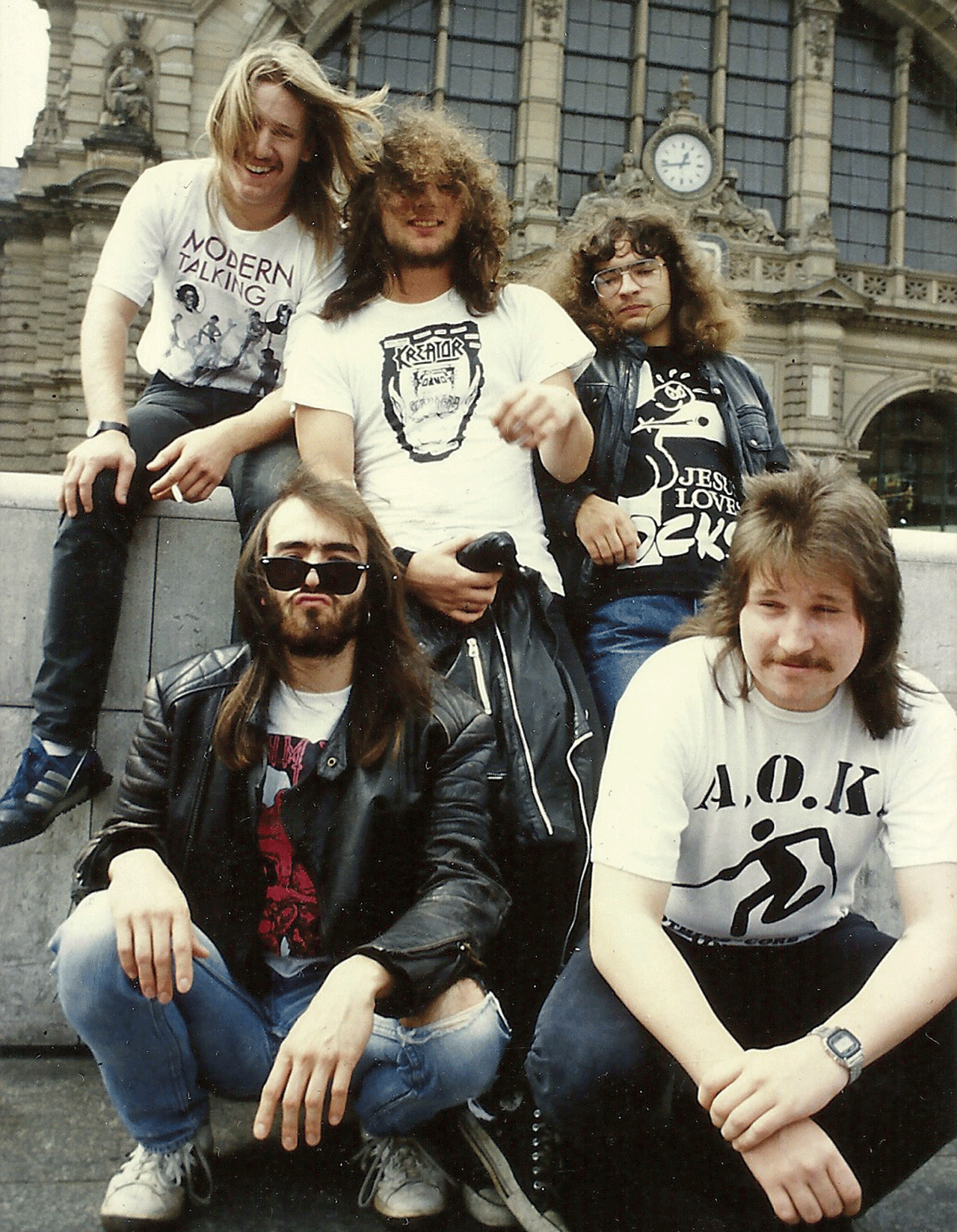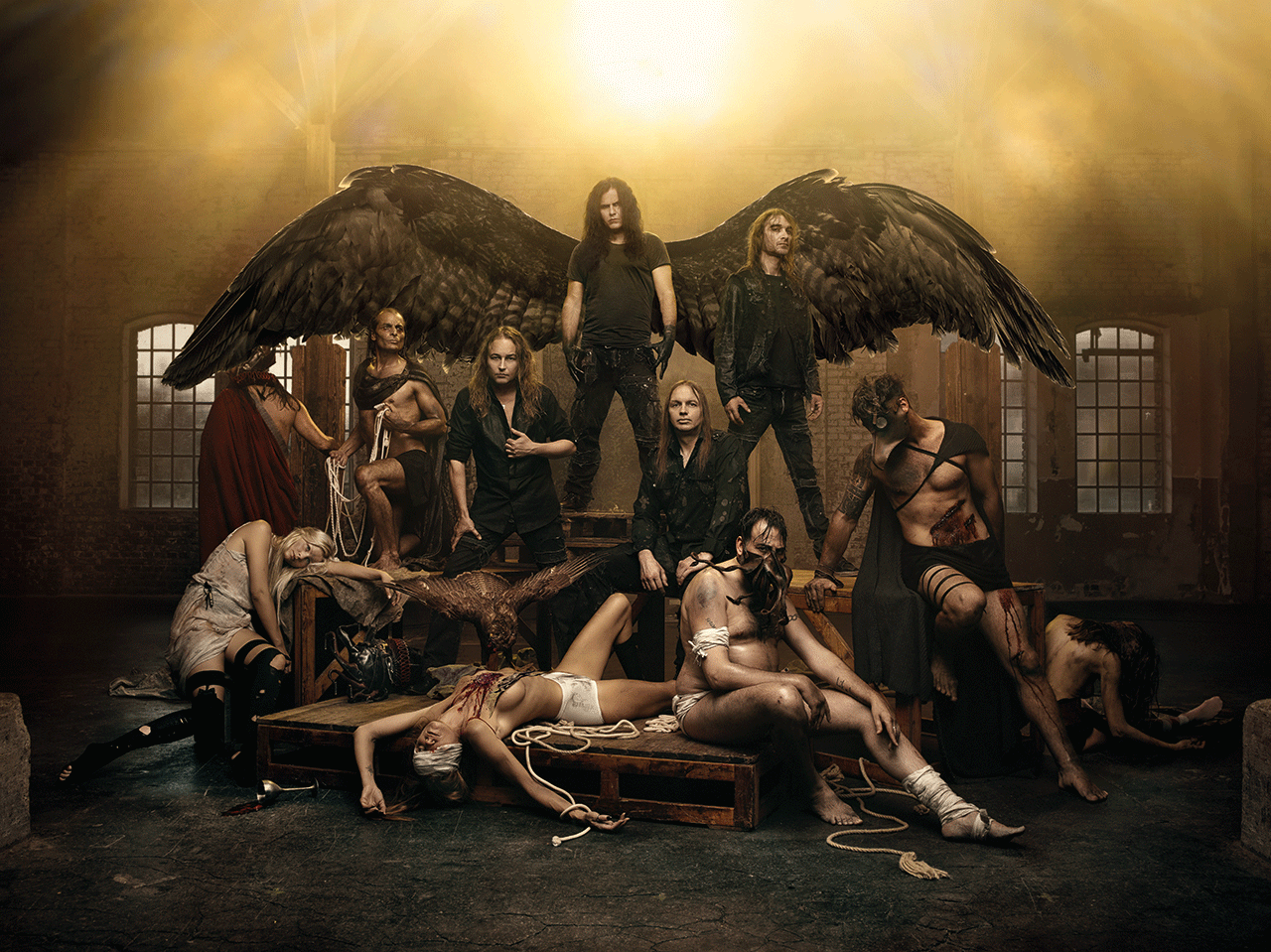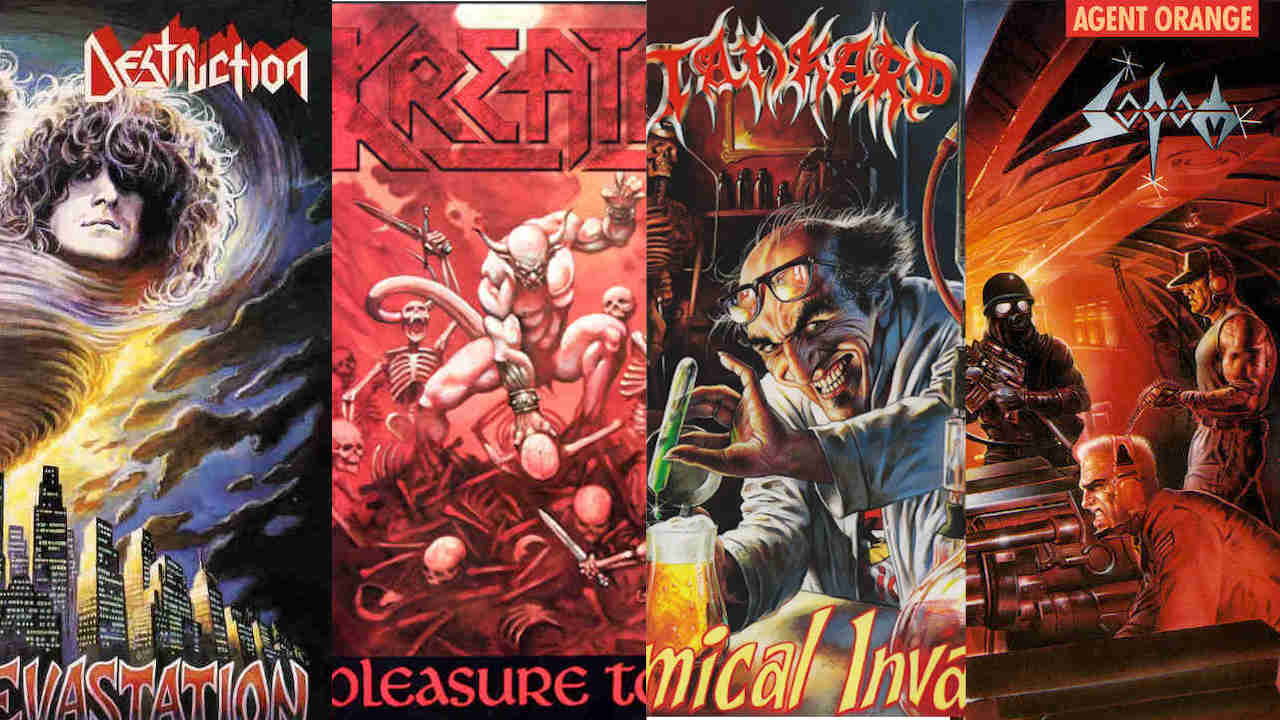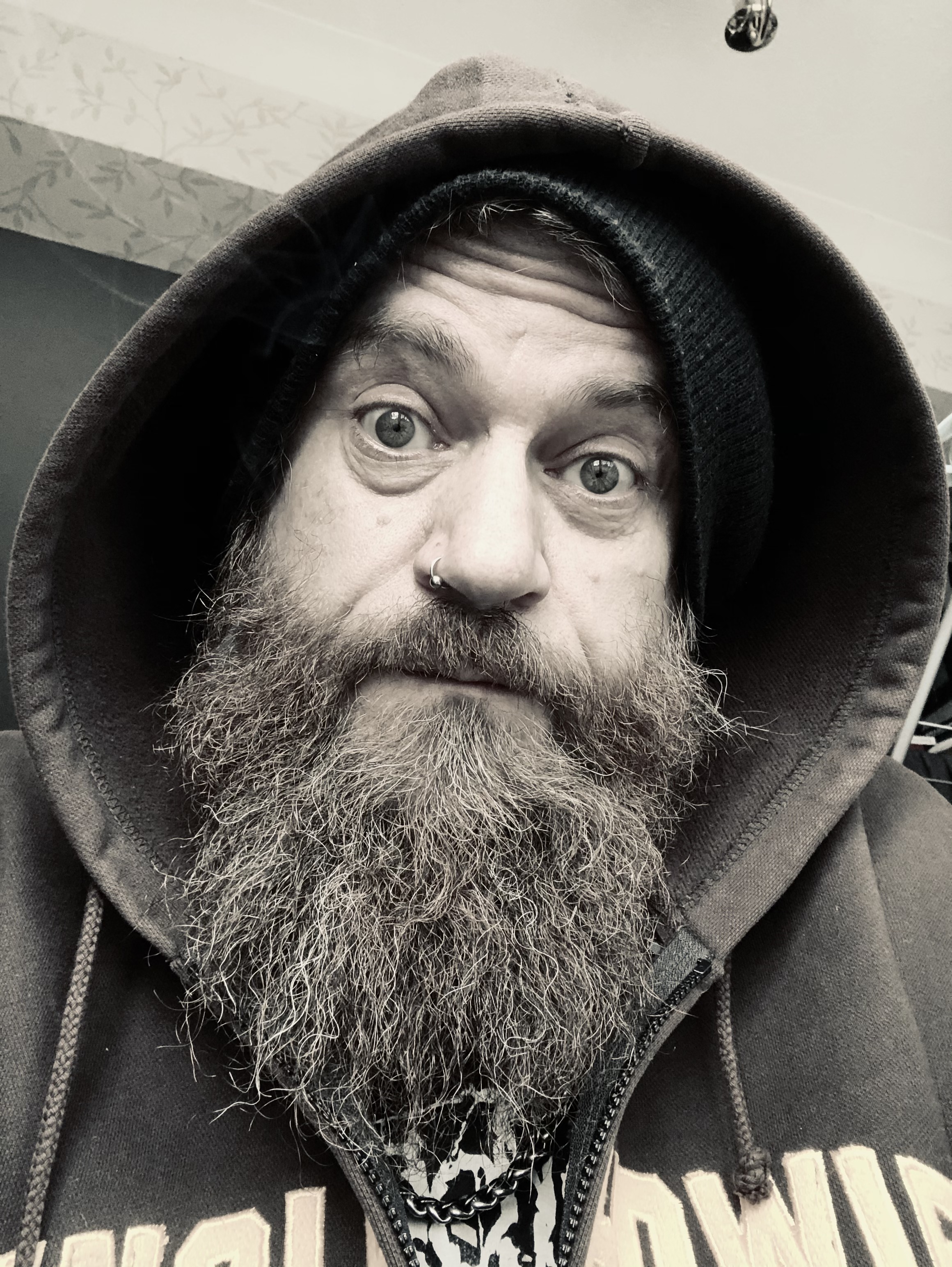Everybody knows about thrash metal’s Big Four. But are you aware of the other Big Four? A vicious and exuberantly youthful response to the faster, heavier and nastier strain of metal that was being propagated by Metallica and Slayer thousands of miles away in the US, the German thrash scene had its own quartet of game-changing bands that set Europe alight in the mid-80s.
First off the starting blocks were Sodom. Hailing from Gelsenkirchen, in the industrial region of the Ruhr Valley in western Germany, they formed in 1981 and drew early inspiration from the flourishing New Wave Of British Heavy Metal and the rowdy fury of British punk bands such as GBH and English Dogs. From those components, a new breed of balls-out heavy metal was born, albeit performed by snotty teenagers with no real clue about how to forge a career.
“For me, when Venom came out in ’81, that was the biggest inspiration. We talked about forming a band and making the same kind of music… or maybe doing something heavier!” laughs frontman and bassist Tom ‘Angelripper’ Such. “We started rehearsing and we got signed at the end of ’83. But from then we had to learn our profession and be able to play our songs properly! There were a lot of bands in Germany that never got a big chance, but we grabbed it and ran with it.”

- 10 cult 80s thrash albums every metal fan should know about
- How to sound like Metallica's James Hetfield
Meanwhile, in the larger Ruhr Valley city of Essen, a trio of metal-loving schoolkids were putting their own band together. Initially called Tormentor, they soon evolved into Kreator, the band that would most convincingly put German thrash on the global map. Today, frontman Mille Petrozza admits that he never expected to achieve anything with his first band, but thanks to the attentions of newly forged German metal label Noise Records, Kreator’s rise to glory began before the band were even legally allowed to drink.
“To be honest, when we were starting the band, we didn’t feel ready at all!” he chuckles. “We had a friend that sent our first demo tape to the boss at Noise Records and we were really surprised that we got signed. We didn’t feel like we were as good as other bands. My mother had to sign my record contract! I was only 16 or 17 at the time, but it was like, ‘OK, let’s make an album…’”
Arguably the most important label in the German metal scene during the 80s, Noise Records was a secondary venture for founder Karl-Ulrich Walterbach, as he struggled to find bands to sign to his punk label, Aggressive Rockproduktionen. While spending some time in the US, Karl stumbled upon what seemed to be a vibrant scene of new metal bands, and returned to his native country with a plan to hunt down the very best young German bands he could find.
“I approached one or two fanzine guys and asked them about bands, and over a six-month period in late ’82 and early ’83, some tapes came in,” he recalls. “They didn’t really excite me because they were sub-par and not really up to the level I expected metal to be when I compared it with American bands. But I needed to get into it. I could sense there was something brewing, you know?”

- Kreator’s Pleasure To Kill: the brutal 80s masterpiece that put Euro thrash on the map
- On a budget? Here are the best budget turntables
Among those tapes were the first Kreator recordings: impossibly raw, chaotic and noticeably less precise than anything Metallica or Megadeth were doing at the time, they didn’t sound like the first efforts of potential world-beaters, and yet Karl couldn’t shake the sense that something significant was about to explode. He snapped up the more commercially viable likes of Helloween and pirate-metal pioneers Running Wild, but also signed Kreator and set them on the road towards a three-decade career.
“If I was signing bands today, I probably wouldn’t sign a single one of them!” Karl laughs. “After all these years, the approach to metal music has become much more technical, the expectations are higher, competition is fierce, and you expect much more from a new band. But if you give bands a chance, no matter how mediocre they are, if there’s some core talent there then it will evolve.”
German thrash wasn’t solely conceived within the Ruhr Valley’s bleak, industrial landscapes. Destruction, from the country’s rural southwest, and Tankard, from the central metropolis of Frankfurt, were pursuing similar dreams of heavy metal glory to their western peers. As the metal scene began to expand in the US, so the German thrash fraternity began to realise that they had something special of their own.
“We all found each other pretty fast,” Destruction vocalist/ bassist Schmier recalls. “There was a famous Venom fan club meeting in Frankfurt in 1984 and we all met there. The guys from Tankard were playing at the party, and we all kept in contact. It was so exciting for us, because we were basically a bunch of hillbillies!”
“Yeah, we played together with Sodom and Destruction in ’84,” says Andreas ‘Gerre’ Geremia, frontman with self-proclaimed ‘alcoholic metal’ crew Tankard. “There was a guy there from SPV and Sodom got a contract, Destruction got a contract, but not us, ha ha ha! They thought we weren’t good enough and not heavy enough, but we got better and eventually signed to Noise.”

- How the greatest thrash band you’ve (probably) never heard made the comeback album of the decade
- The best budget wireless headphones: wire-free and wallet-friendly
As the 80s raced forward, all four bands began to unleash their rampaging anthems upon the world, ably supported by less prominent fellow countrymen such as Holy Moses, Paradox and Angel Dust. From Sodom’s grim and grotesque Obsessed By Cruelty and Tankard’s punk-fuelled Zombie Attack, to the bug-eyed belligerence of Kreator’s Endless Pain and Destruction’s Infernal Overkill, these debuts were metal at its most extreme and untamed.
“I remember we had our very first mention in a magazine and we called ourselves ‘black hardcore speed metal’,” Schmier notes. “At that time, the term ‘hardcore’ didn’t exist either! We just wanted to put all the extreme words together to describe our style. We wanted to be the craziest band of all time.”
Craziness and persistence are keys to the appeal of German thrash. While none of this Big Four ever achieved the colossal success their US counterparts enjoyed, the sheer intensity and passion of the German thrash phenomenon has been incalculably influential. Laudably, all four have managed to weather passing trends and periods of commercial decline, even during the 90s when more traditional metal was under threat from grunge and nu metal.

- 30 Essential thrash metal bands that aren't the big four
- Best headphones 2020: supercharge your music listening
“There was pressure from the record company in the 90s to become more melodic or more commercial, but we just did what we wanted,” shrugs Tom. “The albums we made in the 90s were some of our heaviest. We didn’t care what anyone else was doing. That’s the secret. Even now, we don’t look elsewhere for inspiration, we don’t listen to anyone. We’re just heavy metal fans making music, and that’s true for all of us.”
Today, all four bands are enjoying a fresh golden era. Kreator, in particular, are as big as they’ve ever been. Their 14th album, 2017’s Gods Of Violence, entered the German album charts at Number One, and the band routinely sell out arenas across Europe and, increasingly, bigger and bigger venues elsewhere. Sodom, Destruction and Tankard are all still very much alive and kicking, too, defying the notion that the fire of youth dwindles over time.
“We never thought it would go this far. It’s fantastic, to create something that lasts for so long,” grins Schmier. “A lot of young bands come along and they have this respect for us, and that’s a fantastic honour for us. It’s motivation.”
“Things are really great right now,” agrees Gerre. “We get a really good mixture of people at our shows. We get old guys, like us, and young kids. More and more girls are coming too, which is amazing because we’re really ugly! Ha ha ha!”
“Metal is healthier than ever now and we’re bigger than ever, with fans all over the world,” concludes Mille. “Back then was like the Stone Age of the thrash metal scene in Europe. It all started with Metallica, Slayer and Possessed, but then it happened everywhere. Those were the glory days, man!”

